Lesson 7
Use Objects to Represent Stories
Warm-up: Notice and Wonder: Balls and Counters (10 minutes)
Narrative
The purpose of this warm-up is to elicit the idea that counters can be used to represent objects, which will be useful when students use counters to represent the objects in stories and story problems in a later activity (MP2). While students may notice and wonder many things about these images, the connections between the image and the counters are the important discussion points. Actual two-color counters can be shown along with the image of the balls, rather than the provided image of two-color counters.
Launch
- Groups of 2
- Display the image.
- “What do you notice? What do you wonder?”
- 1 minute: quiet think time
Activity
- “Discuss your thinking with your partner.”
- 1 minute: partner discussion
- Share and record responses.
Student Facing
What do you wonder?

Student Response
For access, consult one of our IM Certified Partners.
Activity Synthesis
- “Why do you think that 3 of the counters are red and 2 of the counters are yellow?” (To show the 3 basketballs and 2 soccer balls.)
- “We can use counters to show what is happening in a picture or story. There are 3 basketballs and 2 soccer balls. We can write that as ‘3 and 2’ or ‘\(3 + 2\)’.”
- “Soccer balls and basketballs are things that some students play with at recess. What are some things that you like to play with at recess?”
Activity 1: Playing on the Playground (15 minutes)
Narrative
Required Materials
Required Preparation
- 7 objects that represent people are needed, such as plastic toys or dolls. There are also images of people that can be cut out of the provided black line master.
- The playground work mat is printed in the student workbook and is also included in the black line master.
- Each student needs a bag of 10 two-color counters.
Launch
- Display the people and the playground work mat for all to see.
- Read the first problem, demonstrating the action in the story by moving the people onto and off of the playground mat.
- “I want all of you to act out the stories with me. We don’t have enough people. What else could you use to represent the people in the story?” (Students may suggest two-color counters, connecting cubes, or other materials.)
- Give each student a bag with 10 two-color counters.
- “Use your counters to show what is happening in each story.”
Activity
- Read each story. As students demonstrate the actions with counters, ask:
- “How did you show that some of the students went inside to get some water?” (I took some counters off of the mat.)
- “How did you know to push some counters off your mat?” (Because in the story, some of the students went inside to get water.)
- “Show your partner which students are playing basketball.” (Students point to the counters on the mat.)
- “Show your partner which students went inside.” (Students point to the counters off the mat.)
- “Use your counters to show your partner what just happened in the story.”
- Repeat with each problem, varying the prompts as needed by the story.
Student Facing
-
There were 5 students playing basketball at recess.
2 of the students went inside to get some water. -
There were 3 students playing on the swings at recess.
1 more student came over to play on the swings. -
There were 5 students playing tag at recess.
4 of the students went inside.
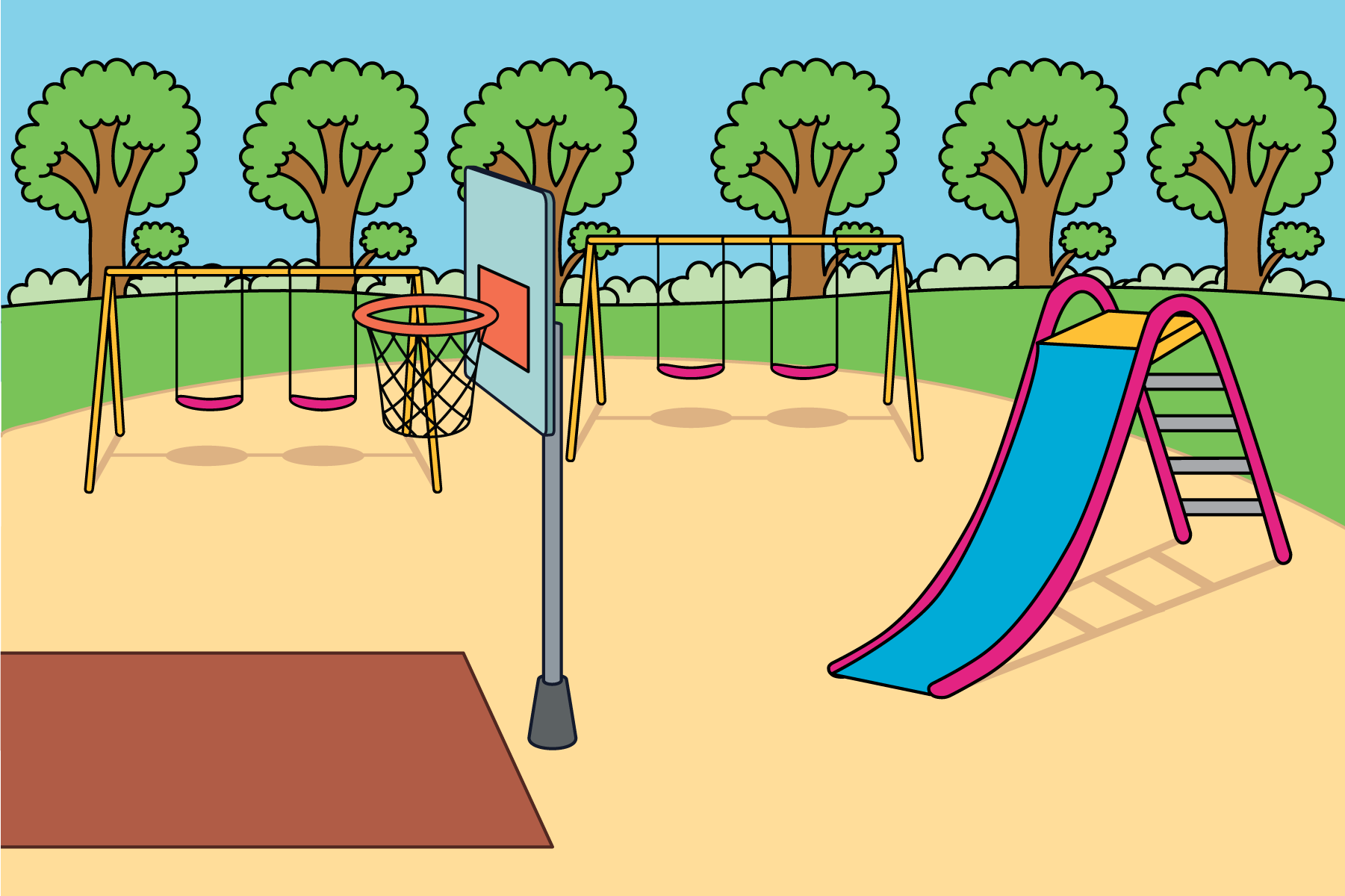
Student Response
For access, consult one of our IM Certified Partners.
Activity Synthesis
- “What does each of your counters represent?” (a person, a student)
- “I used people to show what happened to the students at recess, but we can also use math tools like counters to represent the students.”
Activity 2: Finish the Story (10 minutes)
Narrative
The purpose of this activity is for students to create stories and relate the action in the stories to the action of adding or taking away counters. While in the first activity, the story was provided, in this activity students create the action in the story, which is an opportunity to hear what language students associate with addition and subtraction (MP6). Mats with pictures of each setting are provided to help students make connections between what they do with their cubes and what is happening in the story. The goal of the activity synthesis is to relate the action in the story to the action with counters and show students expressions that represent these actions (MP2).
Advances: Listening, Speaking
Supports accessibility for: Conceptual Processing, Organization
Required Materials
Materials to Gather
Launch
- Groups of 2
- “We have heard and acted out some stories about students playing at school. Where else in your community do you see people playing outside? Describe it to your partner.”
- 30 seconds: quiet think time
- 1 minute: partner discussion
- Share and record responses.
- Display images from the student book.
- “Some of the places where we play and walk around outside are parks and playgrounds. These stories all take place in different parks and playgrounds. How are these pictures the same as parks and playground that you have been to? How are they different?”
- Give each student a bag of 10 two-color counters.
- “We’re going to use our counters to show what is happening in our stories, but this time, the stories aren’t finished yet.”
Activity
- Display the student workbook page of a field and read the first question. Count out 7 counters and place them on the field.
- “I’ve got 7 kids playing tag in the field. What do you think happens next in the story?”
- 30 seconds: quiet think time
- 1 minute: partner discussion
- Share responses.
- Choose one student response and demonstrate the action with the counters.
- “Now it’s your turn. I’m going to read you the first part of the story. Your job is to think about what happens next in the story. Then tell the story to your partner and show them what happens with your counters.”
- Read each question. Give students quiet think time and partner discussion time for each question.
Student Facing
-
There were 7 kids playing tag on the field.

-
There were 2 kids eating at the picnic table.
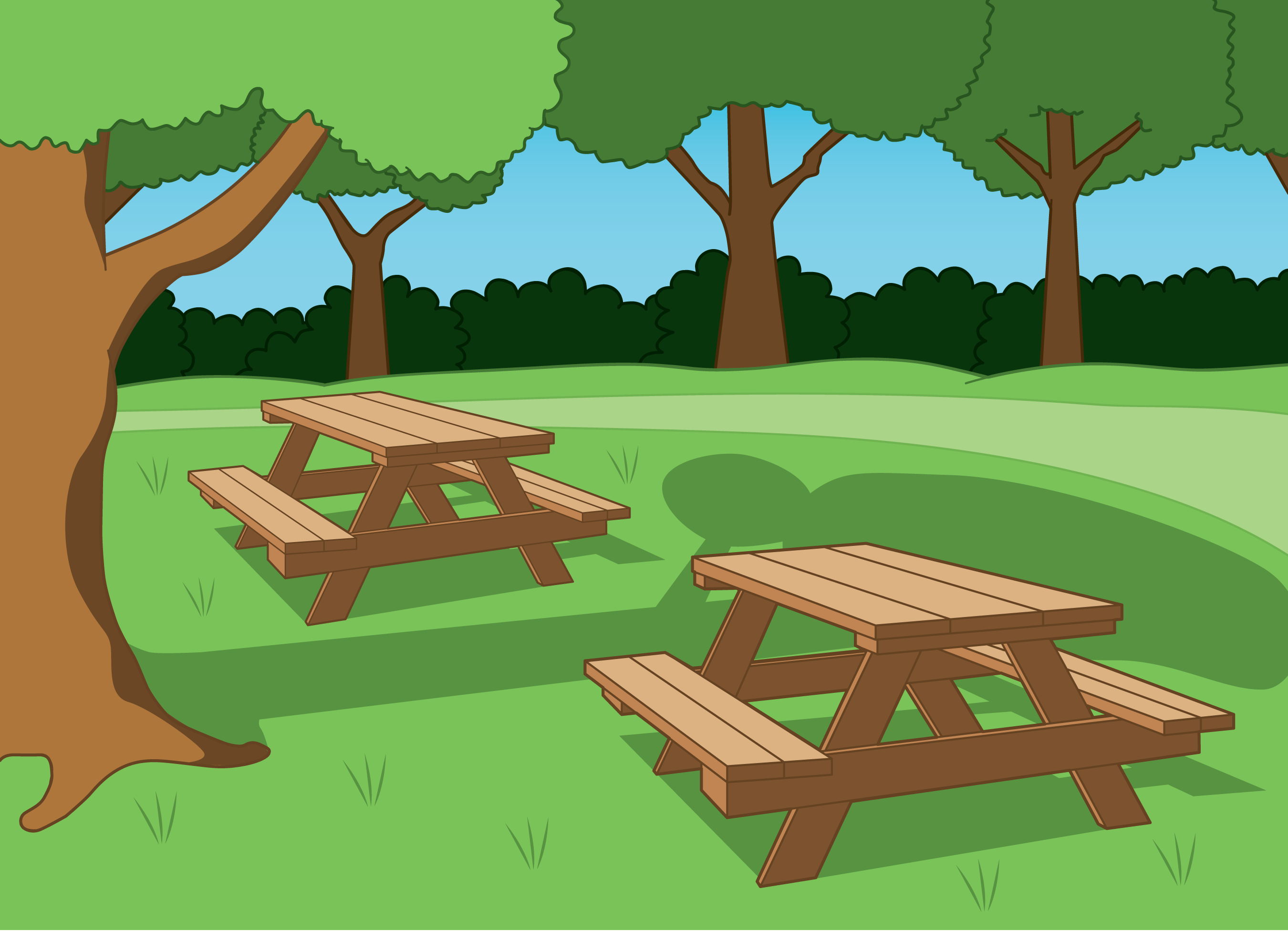
-
There were 4 ducks swimming in the lake.
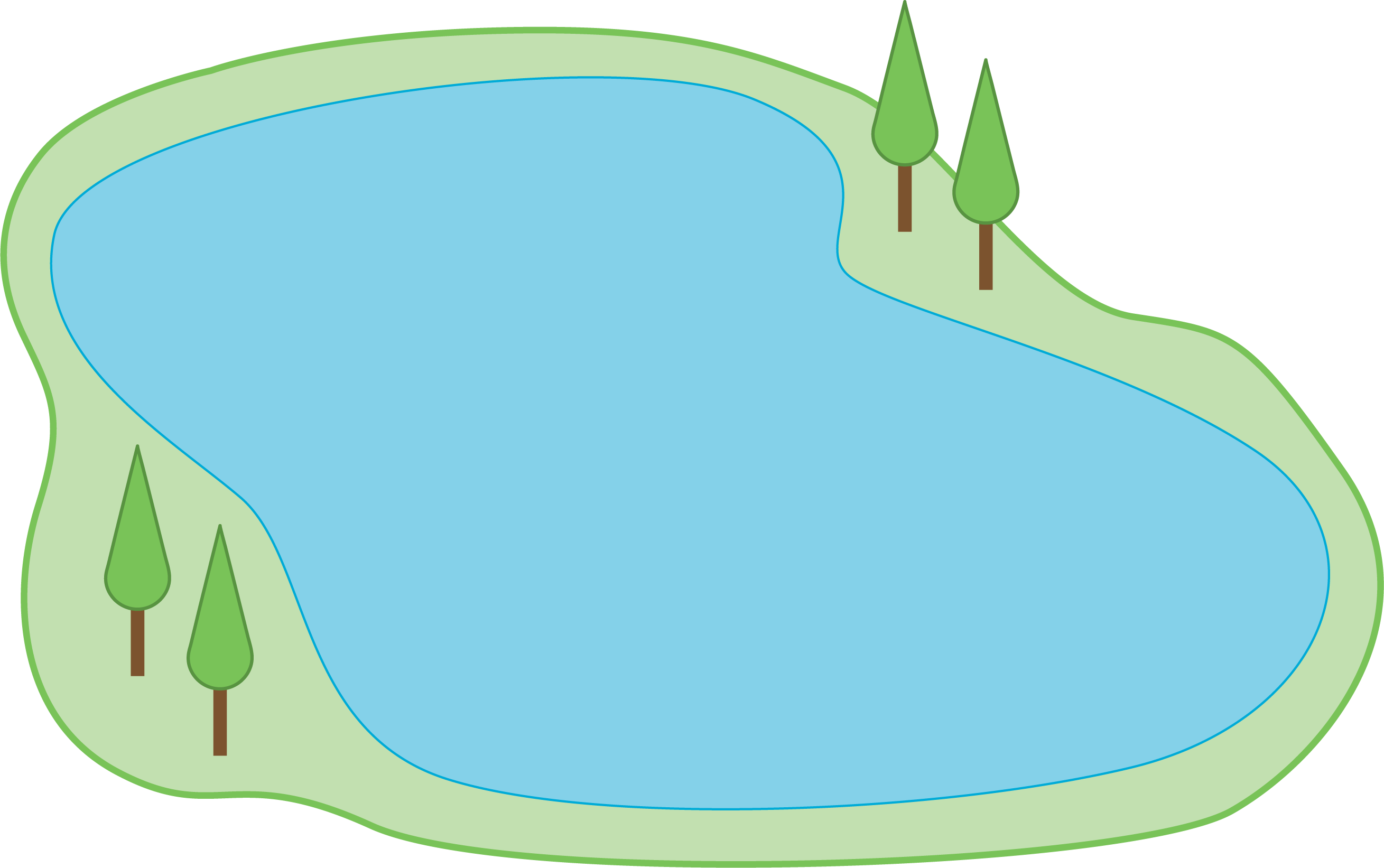
-
There were 5 kids playing hopscotch.
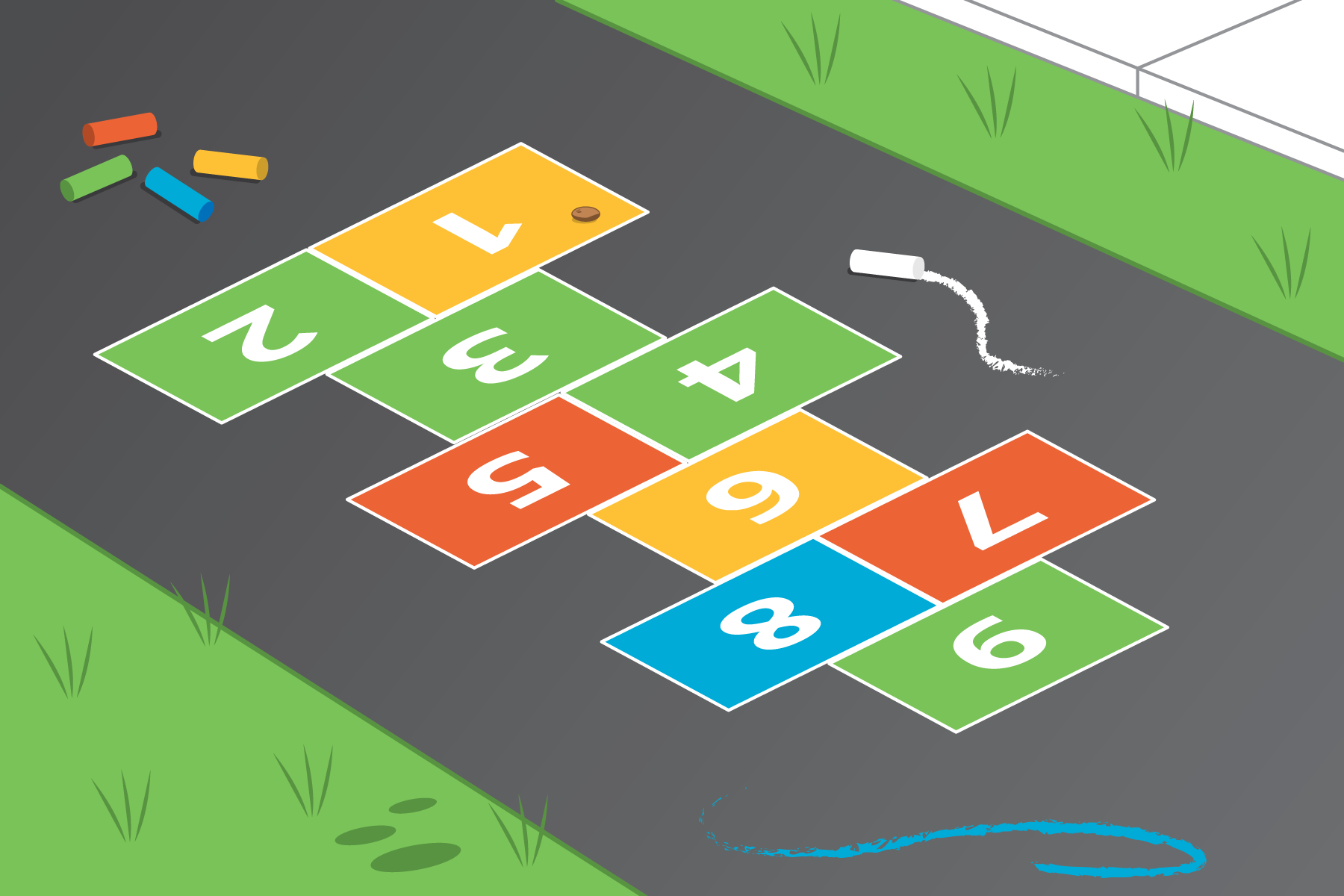
Student Response
For access, consult one of our IM Certified Partners.
Advancing Student Thinking
If students represent the given sentence with counters but need encouragement to make up the rest of the story, consider asking:
- “Can you use your counters to show me what happened first in the story?”
- “What do you think happened next? Do you think more kids came to play tag or do you think some kids went home?”
Activity Synthesis
- For each question, choose a student to share their story and demonstrate what happens with their counters. Record the action with words and numbers and an expression. For example: “7 take away 3” and “\(7 - 3\)”.
- As each student shares, ask: “What do the counters represent?”
Activity 3: Introduce Math Stories, Act It Out (20 minutes)
Narrative
The purpose of this activity is for students to learn stage 2 of the Math Stories center. Students use two-color counters to act out and tell stories involving addition or subtraction with the background mats (MP2). Students are not expected to develop story problems with questions or record using drawings or numbers at this point. In a future variation of this center, students will tell, represent, and solve story problems.
After the new center is introduced, students choose at least 1 other center activity.
- Subtraction Towers
- 5-frames
- Build Shapes
- Counting Collections
Required Materials
Materials to Gather
Materials to Copy
- Math Stories Stage 2 Backgrounds
Required Preparation
- Each group of 2 needs 10 two-color counters.
- Materials from previous centers:
- Subtraction Towers, Stage 1
- 5-frames, Stages 1 and 2
- Build Shapes, Stages 1 and 2
- Counting Collections, Stage 1
Launch
- Groups of 2
- Give each group of students 10 counters and a set of background mats.
- “We are going to learn a new way to do the Math Stories center. It is called Math Stories, Act It Out.”
- Display some counters and the background mat with the picnic tables.
- “I need to make up a story using this background mat. What could I pretend my counters are?” (People sitting at the picnic tables.)
- 30 seconds: quiet think time
- Share responses.
- “These counters are people sitting at the picnic tables. My story is that there were 6 people eating lunch at the picnic table.”
- Demonstrate placing 6 counters on the picnic table.
- “But now I need to add or take away something in my story. What should happen next in the story?” If needed, ask “Should more people come over to the picnic table or should some people leave?”
- Demonstrate acting out the story with counters based on student responses.
- “One partner is going to think of a story to go with the background mat. The other partner is going to use the counters to act out what happened in the story. Take turns making up stories and using counters.”
Activity
- 5 minutes: partner work time
- “Now you can choose another center. You can also continue playing Math Stories.”
- Display the center choices in the student book.
- Invite students to work at the center of their choice.
- 10 minutes: center work time
- If time, invite students to choose another center.
Student Facing
Choose a center.
Math Stories
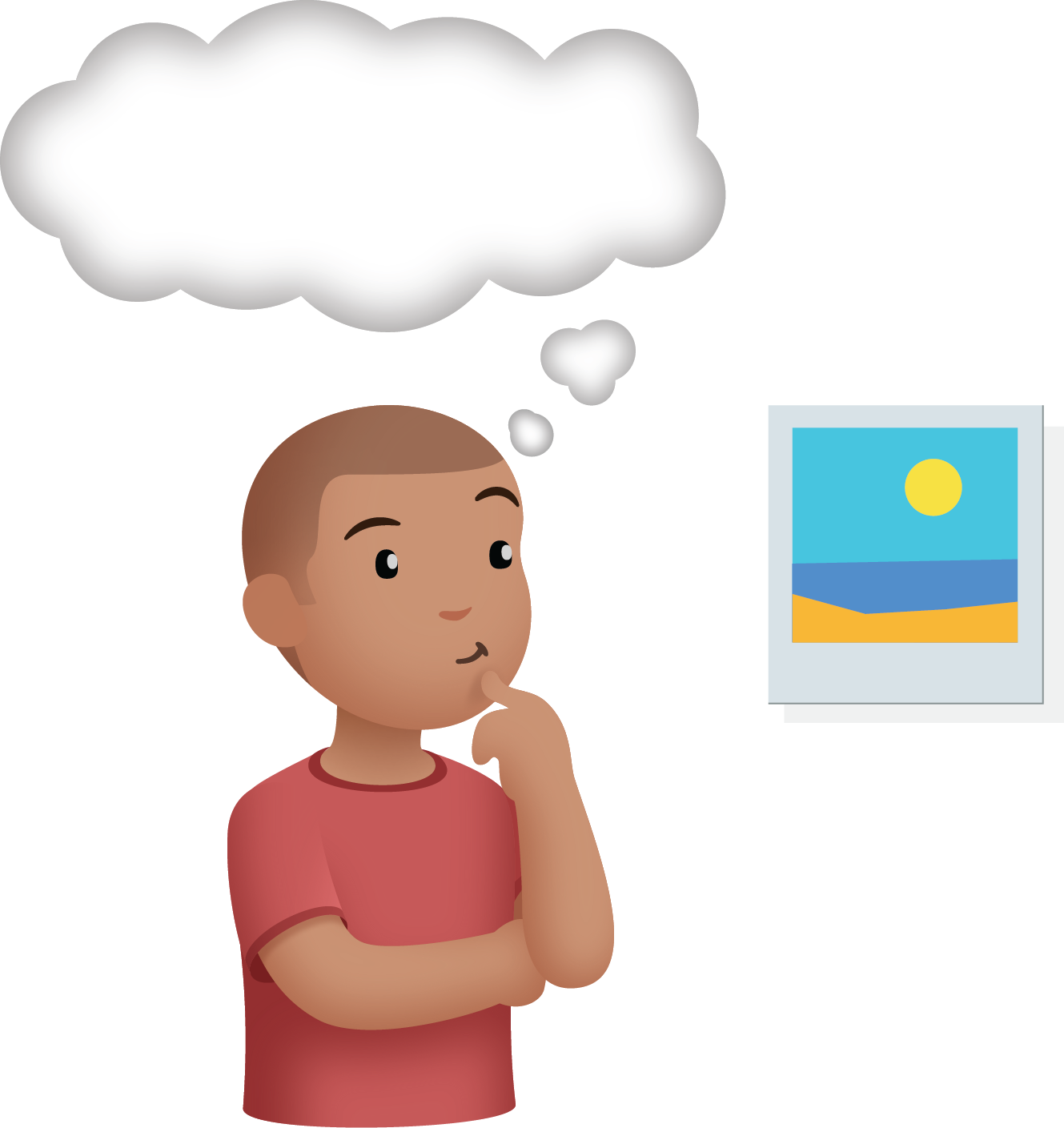
Subtraction Towers

5-frames

Build Shapes

Counting Collections
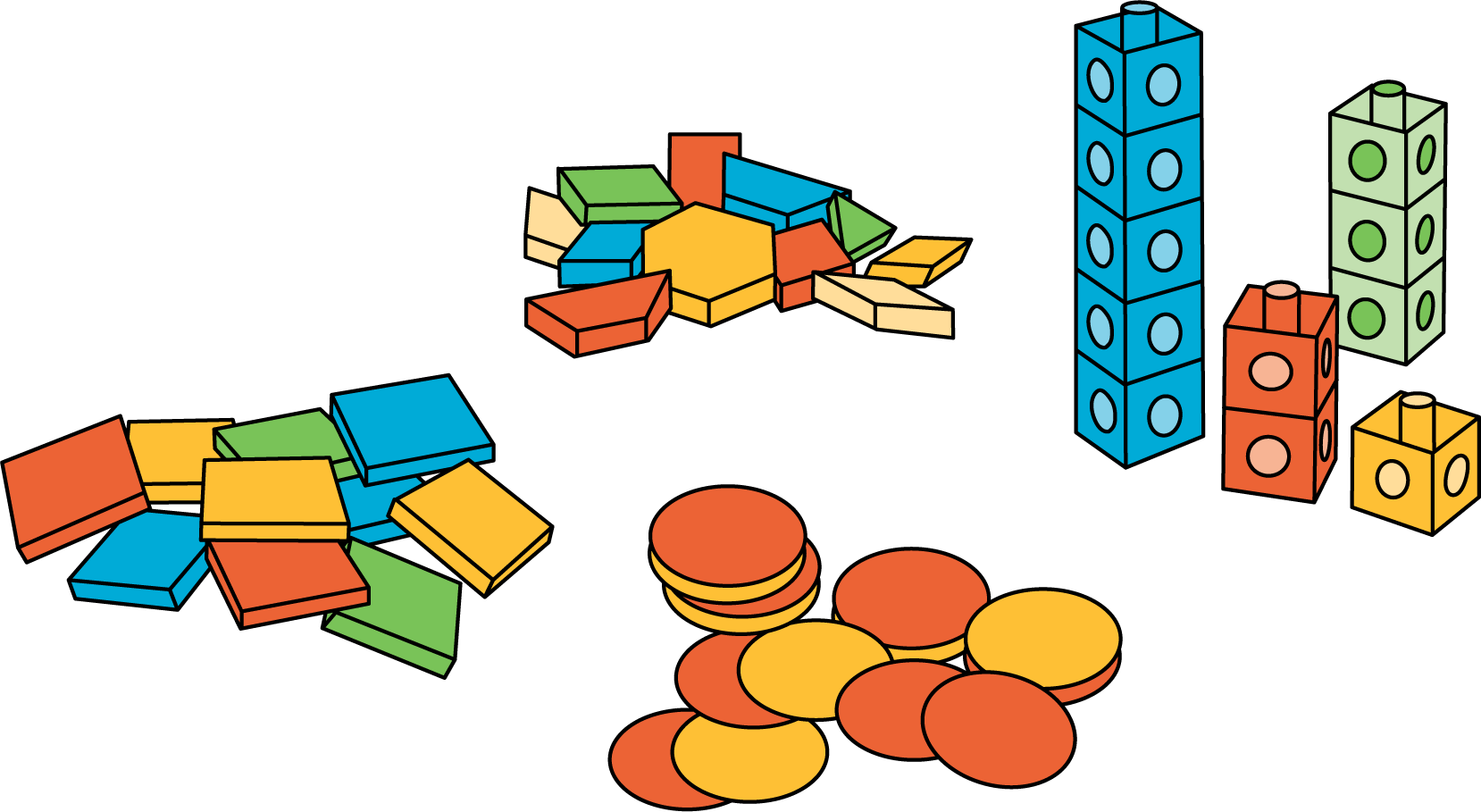
Activity Synthesis
- Invite a student to share a story involving addition.
- Invite a student to share a story involving subtraction.
- As each student shares, record the action with words and numbers and an expression. For example: “5 take away 2” and “\(5 - 2\)”.
Lesson Synthesis
Lesson Synthesis
“Today we used math tools like counters to show the things in a story.”
Reread the first problem from the activity in which students finish the stories, and display 7 counters.
“7 kids are playing tag on the field.”
“Mai said that 2 kids left to eat a snack. How can I show that with my counters?” (Take away 2 counters.)
Display 7 counters.
“Diego said that 3 more kids came over to join the game of tag. How can I show that with my counters?” (Add 3 more counters.)
Cool-down: Unit 4, Section B Checkpoint (0 minutes)
Cool-Down
For access, consult one of our IM Certified Partners.